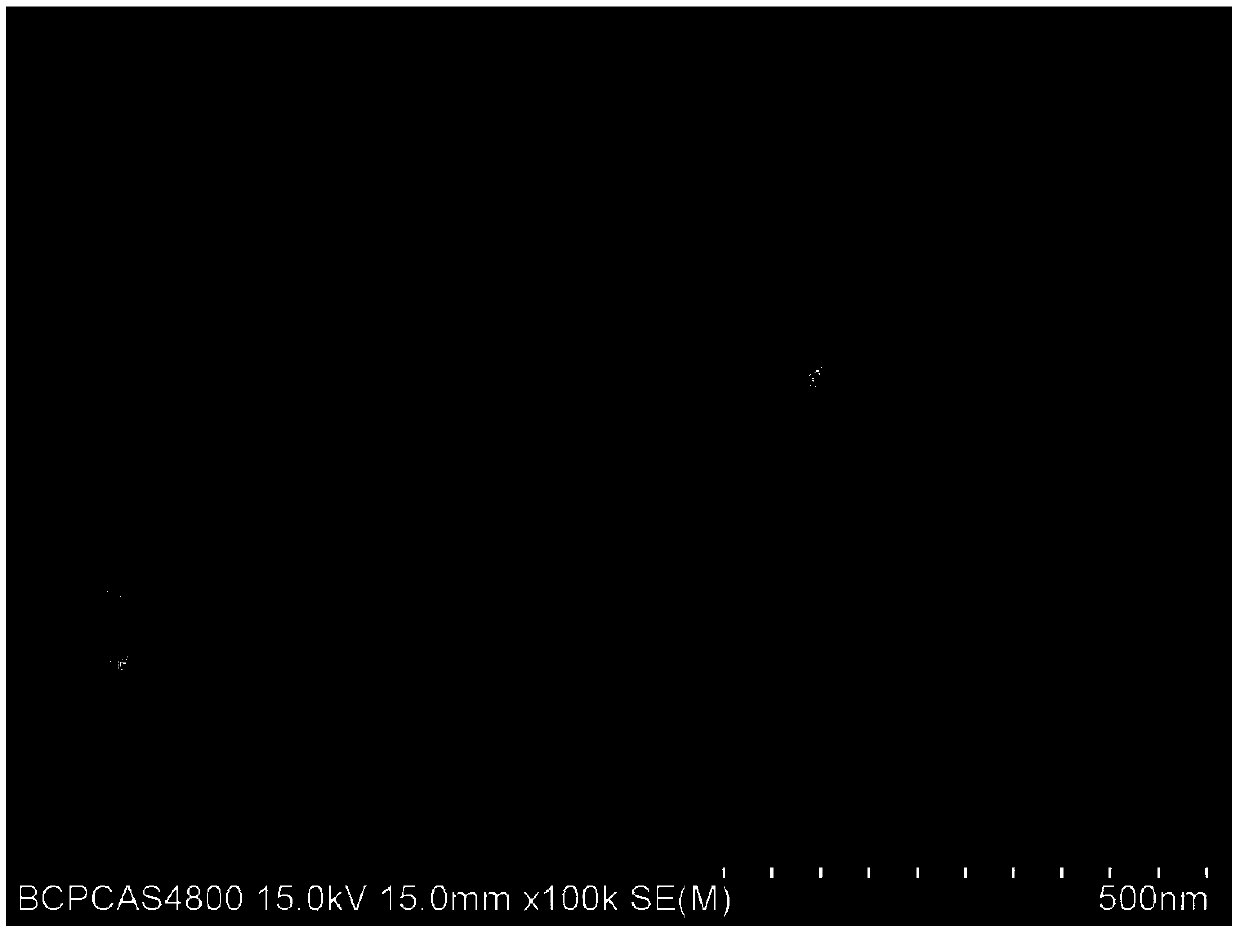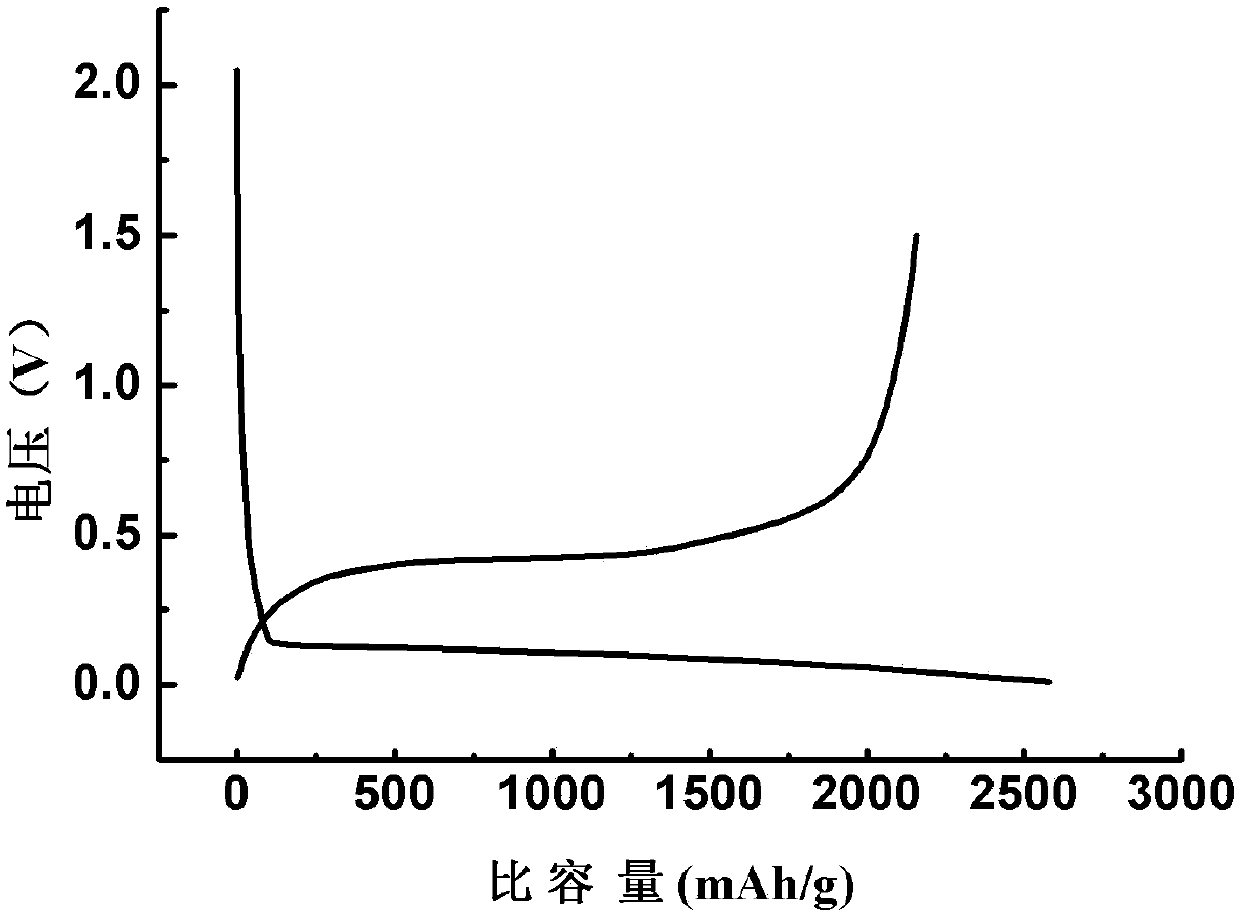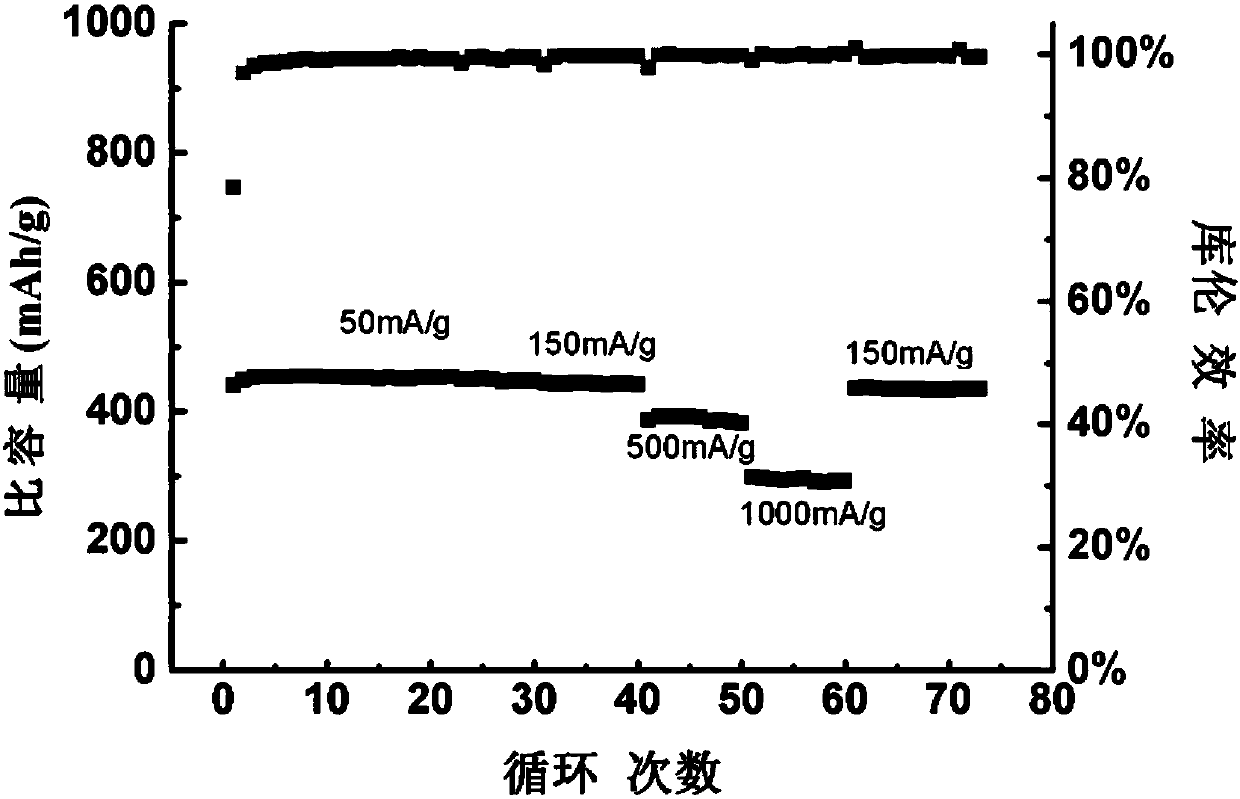Preparation method and application of silicon carbon cathode material of lithium ion battery
A silicon-carbon composite material and carbon material technology, applied in battery electrodes, secondary batteries, circuits, etc., can solve problems such as large volume changes, and achieve the effect of ensuring performance and improving capacity.
- Summary
- Abstract
- Description
- Claims
- Application Information
AI Technical Summary
Problems solved by technology
Method used
Image
Examples
Embodiment 1
[0028] This embodiment provides a method for preparing a silicon-carbon composite material, which includes the following steps in sequence:
[0029] Step 1. Treatment of silicon fume
[0030] Step 1.1 Preparation of silicon metal composite
[0031] Mix silicon powder and metal powder according to the mass ratio of 1:0.05-1:5, and perform ball milling or grinding for 20 to 30 minutes under the protection of an inert gas or a mixed gas of inert gas and hydrogen to form a powder to obtain a silicon-metal composite; step 1 The metal used is one or more of the metals that can form an alloy with silicon, preferably the metal is iron, aluminum, copper, chromium, nickel, tin, antimony, manganese, calcium, magnesium, cobalt, silver, titanium, One or more of germanium. The mass ratio of silicon powder to metal powder is preferably 1:0.3;
[0032] Step 1.2 Heat Treatment
[0033] The silicon-metal composite obtained in step 1.1 is heat-treated under the protection of an inert gas or ...
Embodiment 2
[0053] The silicon powder and the copper powder were ball-milled at 400 rpm for 10 hours under the protection of argon, and the ball-milled mixture was heated at 500° C. for 5 hours under the protection of a mixed gas of argon and hydrogen. After cooling, the powder sample is etched with dilute nitric acid solution to remove the copper component and unreacted copper powder in the copper-silicon alloy, washed with water and then dried as a porous silicon material. The porous silicon material is dispersed in the PVA aqueous solution, spray-dried and granulated. The obtained product is pyrolytically carbonized at high temperature under the protection of argon to obtain a silicon-carbon composite material. The SEM pattern of Si / Cu ball milling heat treatment is as follows figure 1 As shown, the first charge-discharge curve of the silicon-carbon composite material is as follows figure 2 shown.
Embodiment 3
[0055] The silicon powder and the silver powder were ball-milled at 400 rpm for 10 hours under the protection of argon, and the ball-milled mixture was heated at 700°C for 5 hours under the protection of a mixed gas of argon and hydrogen. After cooling, the obtained silicon-metal composite material is mixed with natural graphite in proportion, and the product is mixed evenly with asphalt in proportion. The mixture is pyrolytically carbonized at high temperature under the protection of argon to obtain a silicon-carbon composite material. Cyclic stability curves and Coulombic efficiency of silicon-carbon composites such as image 3 shown.
PUM
 Login to view more
Login to view more Abstract
Description
Claims
Application Information
 Login to view more
Login to view more - R&D Engineer
- R&D Manager
- IP Professional
- Industry Leading Data Capabilities
- Powerful AI technology
- Patent DNA Extraction
Browse by: Latest US Patents, China's latest patents, Technical Efficacy Thesaurus, Application Domain, Technology Topic.
© 2024 PatSnap. All rights reserved.Legal|Privacy policy|Modern Slavery Act Transparency Statement|Sitemap



